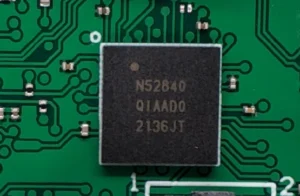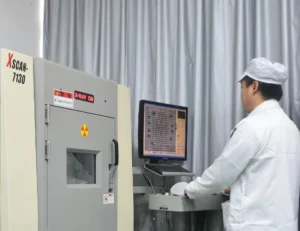1. Introduction to BGA
BGA is a ball grid Chen packaged device. It appeared in the early 1990s. At that time, due to the increasing number of device pins in leaded packages, the lead spacing became smaller and smaller, resulting in the smallest device spacing reaching 0.3mm (12mil). For assembly, this has reached the limit in terms of manufacturability and reliability of device soldering. This will lead to an increased chance of error. At this time, a new type of ball grid array package device appeared. Compared with QFP devices of the same size, BGA can provide up to several times the number of pins.
For BGA, the solder balls under the chip are equivalent to the pins. The pitch of the pins is relatively large, which is a good thing for assembly. Can greatly improve the welding qualification rate and first-time success rate.
The PBGA, which is usually packaged in plastic, is the most widely used device in communication products and consumer products. Its solder ball composition is common 63n/37Pb, eutectic solder. CBGA devices in ceramic packages are sometimes used in military products, and its solder balls are a high-temperature 10Pb/90 Sn non-eutectic solder. With the continuous development of BGA devices, the United States and Japan have developed miniature BGAs with smaller packages, whose package size is only 20% larger than the chip.

2. Inspection of BGA soldering quality
The scintillator platform is actually an X-ray sensitive receiver. Generally speaking, metals, heavy metals such as tin and lead will not pass through X-rays, and will form a dark scene. Ordinary matter is penetrated by X-rays, and nothing can be seen. The X-rays are gathered at a certain position between the light source and the scintillator platform, and a gathering plane appears. Objects or images on the focusing plane form a sharp image on the scintillator platform. But objects or images that are not on the gathering plane are blurred on the scintillator platform, leaving only a shadow.
The principle of X-ray judgment tomography is shown in the figure. Therefore, tomography is performed on solder joints with different heights on the PCB. If you want to check the soldering condition of a certain layer, you only need to adjust this layer to the position of the gathering plane, and the scanning results will be displayed clearly. This clear picture will be taken by an X-ray camera under the device.

3. Acceptance criteria for BGA solder joints
4. Typical defects of BGA solder joints
5. A controversial defect – void
5.1 The position and cause of the void
5.2 Void acceptance criteria
However, the presence of voids reduces the mechanical stress on the solder balls by reducing the excess space applied by the solder balls. The specific reduction depends on the size, location, shape and other factors of the cavity.
6. Conclusion Suggestions for process improvement to reduce BGA defects
To form a perfect solder joint, the following aspects should be paid attention to:
(1) Use fresh solder paste to ensure that the solder paste is evenly stirred, the position of the solder paste coating is accurate, and the position of the component is accurate.
(2) For plastic packaged PBGA, it should be dried at 100°C for 6-8 hours before soldering, and it is better if there is nitrogen.
(3) The reflow temperature profile is a very important factor.
During the welding process, it is necessary to ensure that the welding curve transitions naturally, so that the device is evenly heated, especially in the
(4) The amount of solder paste applied must be appropriate.
The solder paste’s viscosity helps temporarily secure the device and prevent solder bridging during melting. For BGA templates, the solder joint opening is typically 70-80% of the pad size, and the template thickness is usually 0.15mm (6mil).
(5) When designing the pads of BGA on the PCB, the pads of all solder joints must be designed to be the same size.
If some processes must be designed under the pads, you should also find a suitable PCB manufacturer. The pad position should be drilled, and unauthorized enlargement of the pad should be avoided. This is because the via hole cannot be drilled too small. As a result, the amount of tin and the height will differ after soldering between the large and small pads. Weld or open circuit.
(6) In addition, one point should be emphasized about the solder mask problem during PCB production.
Before soldering a BGA, ensure the solder mask around the pad is qualified and vias are coated with a barrier film. Adding solder resist film on the other side of the PCB during production is ineffective. The purpose of solder resist film is to prevent air and void formation during soldering, as well as to prevent solder flow through through holes.
